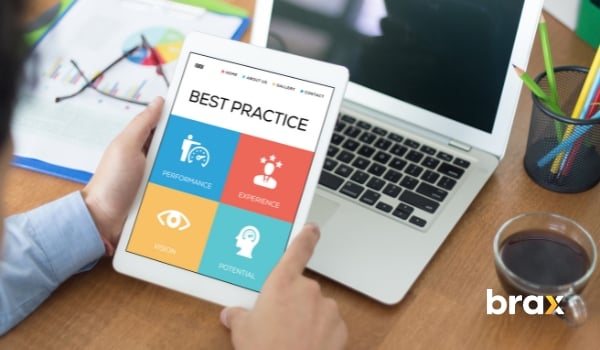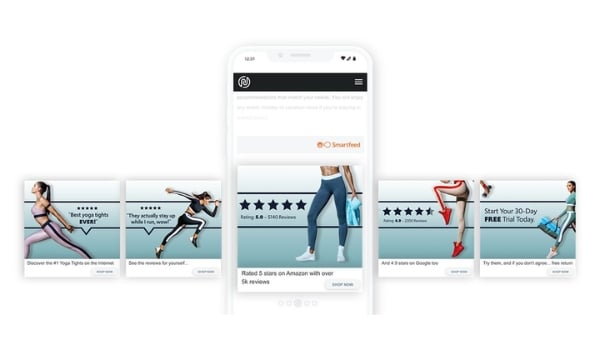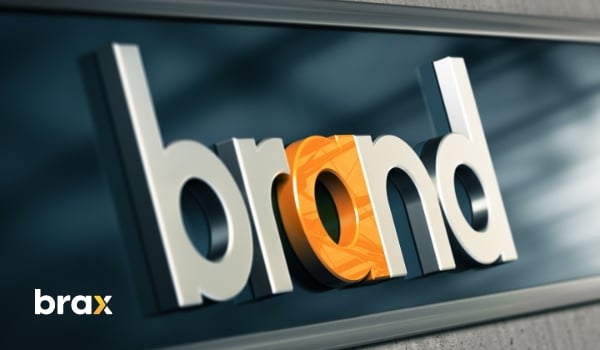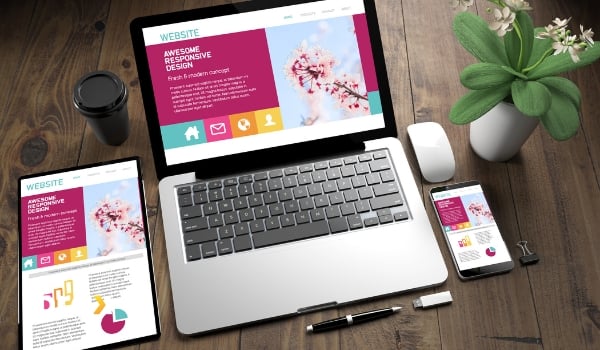Native advertising may not be new, but it certainly is evolving every year. As consumers become increasingly savvy about traditional banner ads, more marketers are turning to native ads as a way to promote their products or services without interrupting the user experience.

With new technologies and platforms constantly emerging, the possibilities for improving and refining native advertising are endless. From personalized targeting to new and innovative ad formats, the future of native advertising is bright.
Best Practices for Native Ads
To ensure success, it's important to understand the best practices for native advertising. Here are some tips and best practices to help you get the most out of your native ad campaigns in 2023:
1. Understand Your Consumers' Age Group
As a clever marketer, you must understand your audience before launching a successful native ad campaign. One of the most important aspects to consider is age group.
Consumers from different generations have distinct preferences, interests, and values that can influence their purchasing decisions.
For instance, Baby Boomers prioritize brand loyalty and quality, while Millennials crave convenience and personalization. To effectively target each demographic, make sure you research their unique characteristics thoroughly.
Gen Zs or the iGen, on the other hand, respond better to video native advertising as they are the age group that consumes video content the most.
Use this knowledge to craft compelling, relatable content that speaks to their needs and desires. With strategic targeting, your native ads will have the potential to convert curious clicks into loyal customers.
2. Test different creative formats, such as carousel, outstream, storyboard ads, and in-feed native ads.
You've done your research, crafted the perfect headline, and selected the most captivating images for your native ad. But why stop there? A truly effective ad campaign requires constant experimentation and adaptation.
Native advertising is no longer just a simple content recommendation widget; there are different forms of native ads today. That's where testing different creative formats comes into play.
Carousel ads provide a unique opportunity to showcase a variety of products or services within a single ad. Outstream ads offer the chance to reach a wider audience outside of traditional ad placements. And storyboard ads allow for a narrative approach to storytelling within a single ad.
By testing different formats, you can discover what resonates most with your target audience and optimize your ad strategy accordingly. So don't settle for the same old native ad format; you have different options to try.

3. Aim to Add Value
When it comes to advertising, people are tired of the same old pitch. They want content that enriches their lives in some way, whether that be through valuable information or just a good laugh.
So if you're looking to make an impact with your ads, your main focus should be on adding value. By providing genuine benefits to your audience, you'll win their trust and foster a positive relationship with them. Whether it's a clever tip or an entertaining video, the key is to make your content memorable and worth sharing.
Remember: aiming to add value may even increase the average order value of customers from your online store.
4. Keep It Personal
Sure, you can blast your ad out to the masses and hope for the best, but why not take advantage of personalization tactics that can make your ad more engaging and effective at reaching the right people?
Mentioning the age group, location, the device being used, or other demographic information can help you filter your audience and only get clicks from people that fall within the demographic that you want to reach.
This is especially valuable since not many ad networks can offer demographic targeting. Below are some examples of how some advertisers mention location and age to filter audiences through the ad copy itself.


5. Write As You Would Speak
It's important to remember that your audience is looking for authentic communication. While it might be tempting to put on your fanciest writing hat and wax poetic with long, complex sentences, that approach could do more harm than good.
Why, you ask?
Well, think about it: when was the last time you were drawn in by a piece of copy that sounded like it was delivered straight from a Victorian novel? Probably never.
That's why experts recommend writing as you would speak — in a friendly, conversational tone — when creating native ad content. By addressing readers as if you were simply chatting with them over a cup of coffee, you'll create a sense of relatability and engagement that just can't be achieved with stuffy language.
So ditch your thesaurus and start embracing your inner chatty Cathy — your customers will thank you for it.
6. Always Use The Brand Name
If you're thinking about promoting your product through native ads, then you better mention your brand name every chance you get. That's because providing a name will make it super clear who is responsible for the promotional content, and it will help the reader connect the dots between the product and the company.
You never know when someone will be interested in the product but not quite ready to commit, and in that case, they may want to research your company at a later time. If you don't provide a name, your ad may not be as memorable, and that could be disastrous for your brand's long-term goals.
Think of it as leaving breadcrumbs for them to follow back to you. Remember, the best ads not only convert but also increase awareness, so use that brand name loud and proud!

7. Ensure Quality Content
Before you hit that "publish" button, it's important to remember one thing: quality is key. In fact, quality content is the backbone of any successful native advertising campaign.
But why is it so important? Because, at the end of the day, it's all about the reader's experience. Sure, you may be promoting a product or service, but if your content isn't up to snuff, consumers will quickly lose interest, and you've lost a potential customer.
So, whether you're writing an article, creating a video, or designing an infographic, take the time to ensure that your content meets high standards.
8. Run A/B Experiments On Native Styles
As any savvy marketer knows, the key to a successful campaign is knowing what works and what doesn't. And one of the most effective ways to find out is through A/B testing different styles of native ads.
By experimenting with a variety of image and ad copy combinations, you can gain valuable insights into what resonates with your particular target audience and use that information to optimize future campaigns.
From font size and color to image placement and copy length, every element of your ad can have a significant impact on its overall performance. So why leave it to chance?
With A/B testing, you can take control of your native ad strategy and ensure that you're getting the best possible results.
9. Take Advantage Of UX on Landing Pages
As advertising continues to evolve, so does the importance of user experience. When designing landing pages for native ads, it's essential to prioritize the user's experience.
By leveraging user experience design principles, you can create a positive interaction that encourages further engagement with your product or service.
Think about it: If a user has a negative experience with your landing page, they're likely to bounce quickly and look elsewhere. On the other hand, a well-designed page, with clear navigation and compelling visuals or copy, can be a game-changer.
So why not take advantage of UX when creating your landing pages? Not only will it improve your user experience, but it can also lead to higher engagement, conversion rates, and, ultimately, a more profitable advertising campaign.
If you're wondering where to start, we recommend looking into the 6 Components that Best Landing Pages have.
10. Create a Good Funnel
Creating native ads is not just about putting your content out there and hoping for the best. To truly make an impact, you need to create a good funnel.
Now, you may be thinking, "What in the world is a funnel?" Simply put, a funnel is a series of steps that potential customers go through in order to become paying customers. Without a good funnel, your native ad may fall flat, leaving you with little to no return on investment.
But don't worry; creating a killer funnel isn't rocket science. By understanding your target audience's needs and desires, providing valuable content, and guiding them toward your end goal, you can create a funnel that not only converts but also results in happy, satisfied customers.
Go through our guide on how to Warm Up Your Customers With Marketing Funnels to learn everything you need to learn about this topic, from what it is and how to create one.

11 . Avoid Clickbait
In today's digital age, clickbait has become a buzzword that's hard to ignore. It's no surprise that clickbait titles attract a lot of clicks, but what about conversions?
They might not lead to actual conversions, which is why it's imperative to avoid clickbait when creating native ads. Instead, focus on crafting compelling titles that accurately describe what's inside each ad.
A catchy title will grab the audience's attention, but it's the actual content that will keep them engaged and help you achieve the desired conversion outcomes. Remember, misleading clickbait titles may leave the reader feeling duped, and when it comes to business, this is never a good thing.
So, if you're looking to create successful native ads, it's time to ditch the clickbait and start focusing on creating captivating, honest titles that deliver. After all, in the age of the internet, honesty really is the best policy.
12 . Leverage Data-Driven Insights to Optimize Performance
As digital advertising continues to boom, leveraging data-driven insights becomes increasingly vital in optimizing performance for native ads.
No matter how invested you are in your ads and landing pages, the proof of the pudding is in the eating. Discerning advertisers will put in the time and effort to constantly test and analyze every aspect of their campaigns to actually get the results they want.
Creative elements like images, visuals, and headlines are key, as is placement, but understanding the underlying data is what really separates successful campaigns from ones that fall flat. With informed analysis and careful consideration, advertisers can optimize their campaigns and increase their ROI.
Simply put, in today's fast-paced marketing landscape, data-driven insights are a foundational tool for success. But with so many metrics to track, it's important to prioritize those that truly indicate the effectiveness of your efforts.
That's where key performance indicators (KPIs) come in — specifically, metrics like click-through rates (CTRs), cost per click (CPCs), and cost per acquisition (CPAs) when using native ads.
By regularly monitoring these KPIs, businesses can gain valuable insights into the engagement and conversion rates of their ads, allowing them to optimize their strategies for maximum impact. Plus, with the availability of advanced tracking and analytics tools for native advertising like Brax, there's no excuse not to take advantage of these powerful metrics.
13. Integrate Tracking Pixels into the Landing Pages
Speaking of monitoring results, it's not enough to simply track clicks and conversions. In order to get a full picture of user behavior, it's important to also monitor what happens in between.
This includes tracking what specific CTA buttons or links were clicked, as well as how the user arrived at the conversion page.
That's where tracking pixels come in. By integrating tracking pixels into landing pages, businesses can gain valuable insights into user behavior and make informed decisions about their marketing strategies.
Perhaps even more importantly, tracking pixels can be used to remarket to potential customers who initially showed interest but didn't proceed to conversion.
14. Separate Native Ads Campaigns Based on Targeted Device
It's important to remember that one ad does not fit all. In fact, the audience reactions can greatly differ depending on the device being used.
Some marketers have found that it's easier to encourage sign-ups when using mobile native ads, while others have seen that paying consumers interact better with desktops. These are not set in stone, though — so the experience is not the same for everyone.
But why is this the case? Well, the results can vary greatly based on the offer and mode of promotion. That's why it's imperative to test and analyze data (always!) to see which works best for your campaign.
By separating your native ads campaigns based on the targeted device, you'll be able to optimize your results and reach your intended audience most effectively. As they say, knowledge is power, so be sure to gather as much data as possible to make informed decisions for your ads campaign.

15 . Ladder Up To Objectives
If you're delving into the world of native advertising, it's important to have a clear vision of what you want to achieve before diving in headfirst.
Rather than operating in a silo, each native ad you create should contribute towards the overarching business objectives you've set out to achieve.
A successful native ad campaign isn't just about individual click-through rates or impressions; it's about how those metrics align with your company's goals. By laddering up to these larger objectives, you can ensure your native advertisements are working towards something meaningful and impactful.
Think about how each native ad contributes towards achieving larger business objectives, and you can ensure that your efforts are not wasted on native advertising campaigns that won't ultimately drive results. Whether it's to raise brand awareness or drive sales, setting clear objectives and working towards them with your native ads is key to success.
16. Utilize Storytelling
Storytelling has been a fundamental technique for humans to communicate ideas, history, and values since the dawn of human language. It is no wonder that this technique has permeated marketing strategies with tales of brand achievements, innovations, and products.
However, the rise of traditional ads as a ubiquitous marketing tool has made it challenging for ads to stand out in the sea of content. To overcome this, experts recommend utilizing storytelling through native ads as a tool to engage and connect with potential customers.
Storytelling allows brands to communicate a narrative that is relatable, memorable, and appealing, providing a unique value proposition.
By incorporating storytelling into native ads, brands can create an experience that resonates with customers and separates them from their competitors.
Wrapping Up
If you're looking to create a compelling native advertisement, it's essential to remember these native advertising best practices that top marketers use.
Implementing these strategies can greatly improve the success of your current campaigns or serve as a strong foundation for your first-ever native ad.
But why stop there? To take it to the next level, signing up for a free demo on Brax for managing native ads may just be the ticket. This tool can save you time and help you achieve success more quickly, making it a great resource for any marketer looking to create successful native ads.

